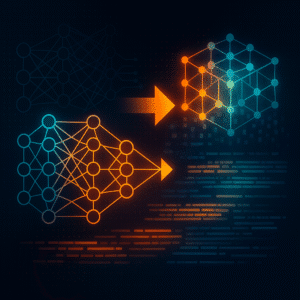Understanding how LLMs are trained is essential for grasping the capabilities and limitations of AI-powered language models. From data collection to fine-tuning, the training process of large language models (LLMs) involves complex steps that transform raw text into intelligent output.
What Are LLMs?
Large Language Models (LLMs) are AI systems capable of generating and understanding human language. They are trained on massive datasets and use deep learning techniques, especially transformer architectures, to process and generate text.
Key Steps in Training LLMs
1. Data Collection
The first step in how LLMs are trained is collecting vast amounts of text data. Sources include:
- Books
- Wikipedia articles
- News websites
- Online forums
The data must be diverse and representative of human language use.
2. Data Cleaning
Before training begins, the collected data is cleaned to remove:
- Duplicates
- Low-quality text
- Personally identifiable information
This ensures the model learns from reliable and safe content.
3. Tokenization
Tokenization is the process of converting text into tokens (small pieces like words or subwords). It helps the model understand language patterns more efficiently.
4. Pretraining
This is the core step in how LLMs are trained. During pretraining:
- The model learns language patterns by predicting masked words or next words
- Training uses billions of tokens
- This phase requires powerful hardware like GPUs or TPUs
Pretraining is unsupervised, meaning no labeled data is required.
5. Fine-Tuning
After pretraining, the model undergoes fine-tuning on specific tasks like:
- Sentiment analysis
- Translation
- Question answering
This step involves supervised learning with labeled datasets.
6. Evaluation and Iteration
Models are evaluated for accuracy, bias, and safety. Researchers may:
- Adjust model parameters
- Retrain on improved datasets
- Add safety filters
Why Understanding How LLMs Are Trained Matters
Knowing how LLMs are trained helps users and developers:
- Trust AI outputs
- Improve transparency
- Address ethical concerns
It also informs policy-making and responsible AI usage.

Internal and External Resources
For a deep dive, visit:
Conclusion
Understanding how LLMs are trained reveals the complexity behind AI-powered tools. From massive datasets to intricate fine-tuning, each step ensures models like ChatGPT perform effectively. Stay informed to make smarter decisions with AI.
FAQ: How LLMs Are Trained
What data is used to train LLMs?
LLMs are trained on a wide range of texts, including books, articles, and web content to ensure diversity.
What is pretraining in LLMs?
Pretraining is the initial phase where LLMs learn language patterns using unsupervised learning on large text datasets.
Why is tokenization important in LLM training?
Tokenization breaks text into manageable units, helping LLMs understand and generate language more efficiently.


Leave a Reply